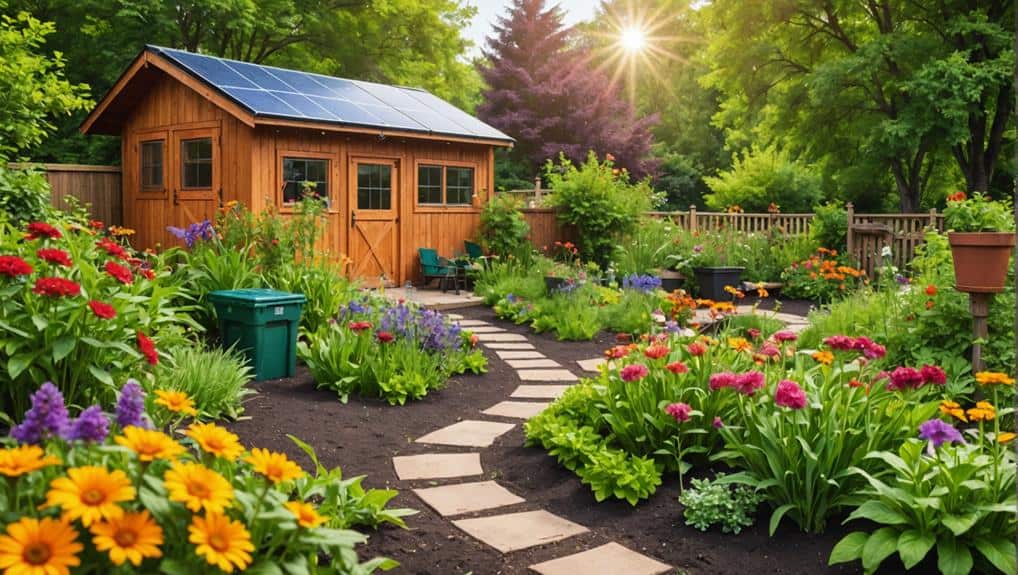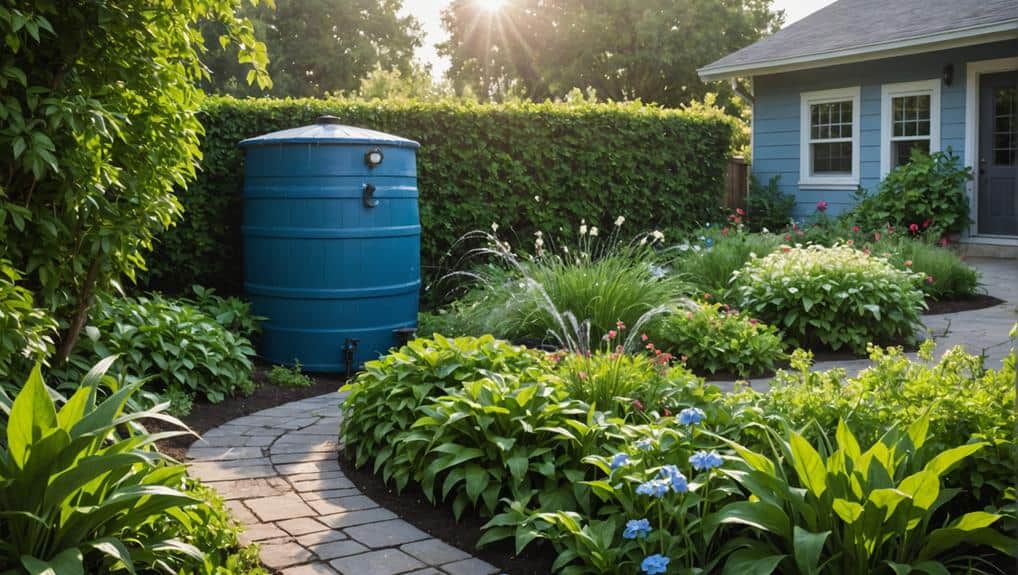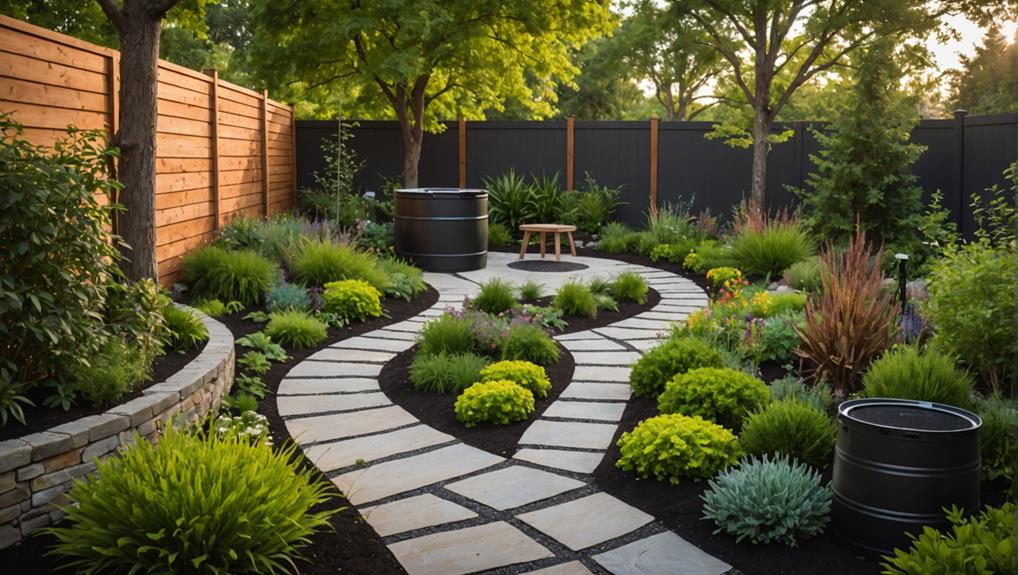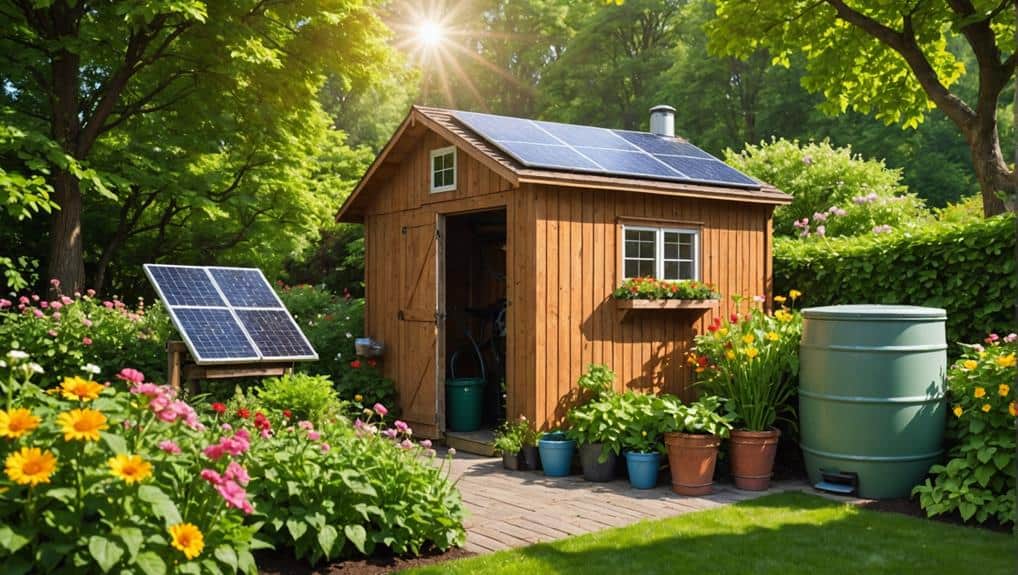When you think about your garden, it's easy to overlook the energy consumption involved in maintaining it. By switching to battery-powered tools or incorporating solar lights, you can significantly reduce your energy usage without sacrificing the beauty of your outdoor space. Adjusting your mower's height not only benefits your grass but also cuts down on upkeep time and energy. But there are even more effective strategies at your disposal that can help you cultivate a sustainable garden while saving resources. What if we explored some of these lesser-known techniques together?
Environmental Benefits of Eco-Gardening

Eco-gardening offers a range of environmental benefits that can significantly impact your garden's health and the planet.
By incorporating sustainable gardening practices, you conserve energy and reduce your carbon footprint compared to traditional methods. Using drought-resistant plants not only saves water but also enhances your garden's resilience to climate extremes.
Promoting soil health and water retention are key aspects of eco-gardening. These practices lead to richer soils that support diverse plant life and help prevent erosion.
Additionally, you'll create habitats that enhance biodiversity, stabilizing local wildlife populations and encouraging a balanced ecosystem within your garden.
Companion planting is another effective strategy, enabling you to utilize space efficiently while naturally deterring pests and boosting the growth of neighboring plants.
Sharing your gardening tips with your community fosters a collective understanding of ecological responsibility, inspiring others to adopt these sustainable methods.
Energy-Saving Techniques for Tools
Gardening tools play a crucial role in maintaining an efficient garden while also conserving energy. To start, consider switching to energy-efficient, battery-powered or electric gardening tools. These options typically consume less energy compared to traditional gas-powered ones, helping you lower your energy bills.
For your garden lighting, solar-powered lights are an excellent choice; they rely on renewable energy from the sun and significantly reduce electricity usage.
When it comes to lawn maintenance, adjust your mower's cutting height to the highest setting. This promotes healthier grass and lowers the frequency of mowing, ultimately saving energy.
It's also smart to opt for extendable gardening tools. These tools minimize the need for repetitive bending or kneeling, thus reducing your energy expenditure during tasks.
Lastly, don't underestimate the importance of regular maintenance on your tools. By cleaning and sharpening blades, you enhance efficiency, which leads to less energy consumption during use.
Implementing these energy-saving techniques not only helps the environment but also creates a more enjoyable gardening experience for you.
Efficient Watering Practices

Maximizing the efficiency of your watering practices can significantly impact both your garden's health and your water usage. By adopting a few strategies, you can save water and promote a thriving garden. Here are some effective tips:
- Water Early or Late: Water your plants during the early morning or late evening to reduce water evaporation. This can save you up to 30% of water compared to watering during peak sun hours.
- Install Rain Barrels: Capture rainwater by setting up rain barrels. A typical roof can gather over 1,000 gallons annually, which can greatly help during dry spells.
- Group Plants: Organize your garden by grouping plants with similar watering needs together. This optimizes water usage and ensures each plant receives the moisture it needs.
- Use Mulch: Incorporate mulch around your plants, which can reduce soil moisture evaporation by up to 50%. This leads to less frequent watering and helps conserve water.
Sustainable Plant Selection
Selecting the right plants for your garden is crucial for promoting sustainability and conserving resources. Start with drought-resistant plants like salvia, lavender, and ornamental grasses. These require less water, effectively reducing your overall irrigation needs.
By choosing native perennials, which thrive in local climates, you can create a low-maintenance garden that adapts naturally to the surrounding soil and weather conditions.
Incorporate a variety of plant types to enhance biodiversity and foster a resilient ecosystem that's less susceptible to pests and diseases. This diversity can significantly minimize the need for chemical interventions.
Look for energy-efficient plants, especially shade trees, that can help lower your air conditioning costs during the warmer months.
Aim for plants that aren't just pretty but also intelligent choices in resource conservation.
Creative Landscaping Solutions

Transforming your outdoor space with creative landscaping solutions can significantly enhance both aesthetics and sustainability. By incorporating these strategies, you can reduce water usage and increase energy savings while enjoying a beautiful garden.
- Native Plants: Choose native plants for your landscape design. They typically require less irrigation, helping you conserve water while promoting biodiversity.
- Strategic Placement: Plant trees and shrubs in ways that provide natural shade. This placement can lower air conditioning needs in your home, resulting in energy savings of up to 25%.
- Permeable Paving: Use permeable paving for walkways and patios. This allows rainwater to permeate the ground, enhancing rainwater retention and reducing runoff.
- Windbreaks: Create windbreaks using hedges or fencing. These not only protect your garden but also minimize wind exposure for adjacent structures, which can lower heating costs during the winter months.
Additionally, consider contouring techniques for flower and vegetable beds to improve rainwater retention, ensuring your plants stay hydrated during dry spells.
Embrace these creative solutions to create a stunning, energy-efficient garden!
Final Thoughts
By embracing these energy-saving tips, you're not just nurturing your garden; you're planting seeds of sustainability for the future. Each small change, from using electric tools to selecting water-wise plants, creates a ripple effect, transforming your outdoor space into an eco-friendly haven. As you watch your garden thrive, remember that every effort counts—like a drop of rain nourishing the earth—leading to a greener, more vibrant landscape that benefits both you and the environment.




